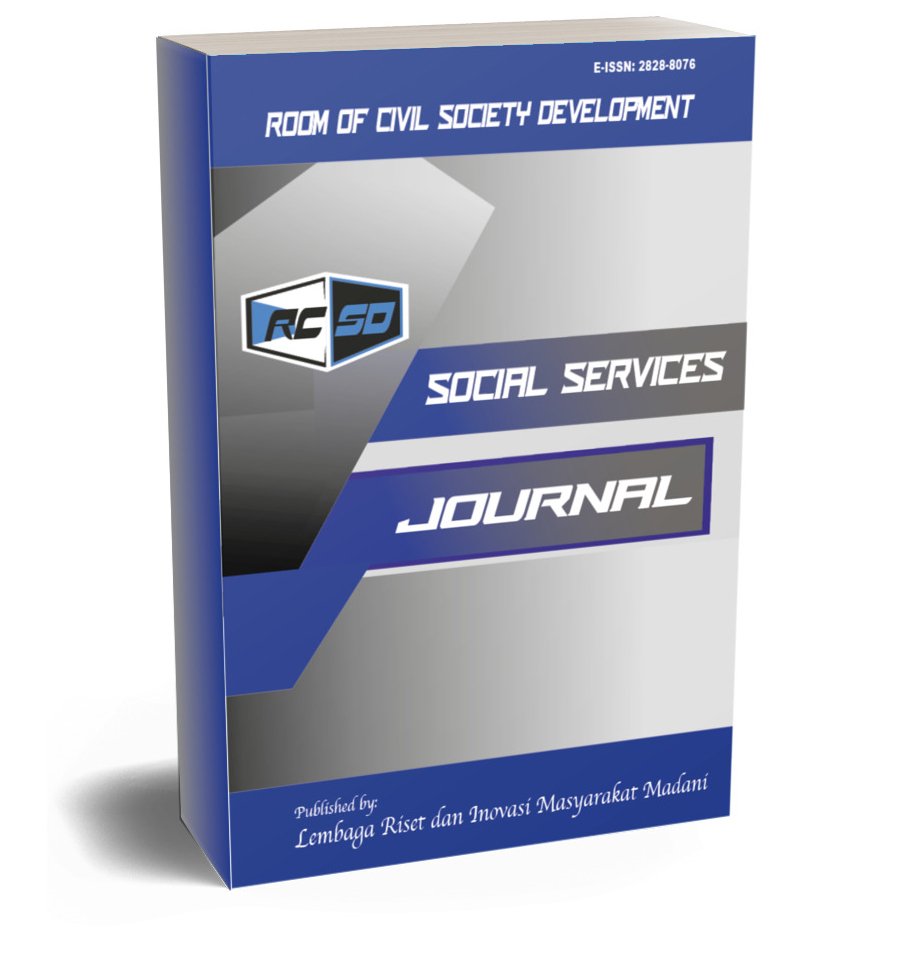Indonesian Linguistics and Culture Training: Building Bridges of Cross-Cultural Understanding from an Early Age
https://doi.org/10.59110/rcsd.525
Keywords:
Cultural Linguistics, Cross-Cultural Learning, Multicultural Education, ToleranceAbstract
This international Community Service activity was held at Lukmanulhakeem School, Yala, Thailand, with the aim of introducing the importance of understanding Indonesian linguistics and culture to teachers and students to strengthen cross-cultural understanding from an early age. The background of this program is based on the need for an understanding of cultural diversity from an early age as an effort to build tolerance and solidarity in the educational environment. The methods used are interactive training, cross-cultural discussions, and field visits. The material provided includes an introduction to the basic vocabulary of Indonesian language and culture, such as greetings and traditional foods and gotong royong traditions. The results of the activity showed that as many as 35 teachers succeeded in improving their understanding of the linguistic concepts of Indonesian culture. In conclusion, this program has succeeded in creating harmonious cross-cultural relationships and has a positive impact on improving the quality of education at Lukmanulhakeem School. For the continuation of this program, further assistance and the provision of technology-based learning media are needed to support the sustainability of implementation in partner schools.
Downloads
References
Ahmad, K. (2015). Educational practice: lessons to be learned from madrasah and religious schools in contemporary southeast asia. Indonesian Journal of Islam and Muslim Societies, 5(1), 29. https://doi.org/10.18326/ijims.v5i1.29-48
Alharbi, A. (2019). The impact of time constraints on language learning. International Journal of Language and Linguistics, 6(3), 145-152. https://doi.org/10.11648/j.ijll.20190603.14
Bahri, S. (2019). The role of islamic education in realizing social interaction based on multiculturalism among students of different religions in elementary schools. International Journal of Islamic Education Research and Multiculturalism (Ijierm), 1(1), 1-17. https://doi.org/10.47006/ijierm.v1i1.2
Buasuwan, T. (2018). Rethinking Thai higher education for Thailand 4.0. Asian Education and Development Studies, 7(4), 455-467. https://doi.org/10.1108/aeds-07-2017-0072
Budiono, et al. (2022). Analisis karakter gotong royong dalam ekstrakurikuler Pramuka. Jurnal Moral Kemasyarakatan. https://doi.org/10.21067/jmk.v7i1.7073
Byram, M. (1997). Teaching and assessing intercultural communicative competence. Multilingual Matters.
Chandransu, P. (2019). Integrating multicultural music education into the public elementary school curricula in Thailand. International Journal of Music Education, 37(3), 413-426. https://doi.org/10.1177/0255761419855827
Chehdimae, S., & Ali, A. (2022). Leadership practices among Islamic private secondary school principals in Southern Thailand: Validating a model of strategic educational leadership. IIUM Journal of Educational Studies, 10(2), 1-15. https://doi.org/10.31436/ijes.v10i2.430
Darmansyah, & Susanti. (2023). Strategi implementasi Adiwiyata di SDN 1 Kota Bengkulu melalui kegiatan gotong royong. Sangkalemo: The Elementary School Teacher Education Journal. https://doi.org/10.37304/sangkalemo.v2i2.10370
Deci, E. L., & Ryan, R. M. (2000). The "what" and "why" of goal pursuits: Human needs and the self-determination of behavior. Psychological Inquiry, 11(4), 227-268. https://doi.org/10.1207/S15327965PLI1104_01
Ellis, R. (2008). The study of second language acquisition. Oxford University Press.
Garrison, D. R., & Anderson, T. (2003). E-learning in the 21st century: A community of inquiry framework for online learning. RoutledgeFalmer.
Goleman, D. (1995). Emotional intelligence: Why it can matter more than IQ. Bantam Books.
Hattie, J. (2009). Visible learning: A synthesis of over 800 meta-analyses relating to achievement. Routledge.
Hofstede, G. (2001). Culture's consequences: Comparing values, behaviors, institutions, and organizations across nations. Sage Publications.
Iswan, I., & Zaitun, Z. (2020). Integrating Islamic Values on ESL Classes: Indonesian Teachers’ Attitudes Toward Islamic Education Management in South Thailand. TA’DIB: JURNAL PENDIDIKAN ISLAM, 25(2), 96-106. https://doi.org/10.19109/td.v25i2.6201
Johnson, D. W., & Johnson, R. T. (2009). An educational psychology success story: Social interdependence theory and cooperative learning. Educational Psychologist, 44(4), 215-227. https://doi.org/10.1080/00461520903213549
Kasmiati, K. and Arbi, A. (2024). Implications of surah al-hujurat verse 13 in realizing harmonization of a multicultural society. Fikroh Jurnal Pemikiran Dan Pendidikan Islam, 17(2), 95-101. https://doi.org/10.37812/fikroh.v17i2.1639
Nitjarunkul, K., Srisang, S., & Wongwanich, S. (2014). Challenges of educators in the context of education reform and unrest: A study of Southern Border Provinces in Thailand. Asian Social Science, 10(18), 232-240. https://doi.org/10.5539/ass.v10n18p232
Pherali, T. (2021). Social justice, education and peacebuilding: Conflict transformation in Southern Thailand. Compare: A Journal of Comparative and International Education, 51(3), 319-337. https://doi.org/10.1080/03057925.2021.1951666
Pherali, T. (2021). Social justice, education and peacebuilding: conflict transformation in southern thailand. Compare a Journal of Comparative and International Education, 53(4), 710-727. https://doi.org/10.1080/03057925.2021.1951666
Richards, J. C., & Rodgers, T. S. (2014). Approaches and methods in language teaching. Cambridge University Press.
Sateemae, S., Abdel‐Monem, T., & Sateemae, M. (2015). Religiosity and social problems among muslim adolescents in southern thailand. Journal of Muslim Mental Health, 9(2). https://doi.org/10.3998/jmmh.10381607.0009.201
Soebahar, M., Muhajarah, K., Suyurno, S., Embong, R., & Panaemalae, A. (2023). Islamic devotion in indonesia, malaysia, and thailand as a deterrent against religious extremism. HTS Teologiese Studies / Theological Studies, 79(1). https://doi.org/10.4102/hts.v79i1.9366
Thornbury, S. (2005). How to teach speaking. Pearson Longman.
Winarti. (2024). Manajemen penguatan pendidikan karakter gotong royong di SD Negeri Bergas Lor 01 Kecamatan Bergas Kabupaten Semarang. Jurnal Inovasi Pembelajaran di Sekolah. https://doi.org/10.51874/jips.v5i1.233
Downloads
Published
How to Cite
Issue
Section
License
Copyright (c) 2025 Firman Alamasyah Mansyur, Abdul Haris, Widya Nengsih, Rachman Saleh

This work is licensed under a Creative Commons Attribution-ShareAlike 4.0 International License.















